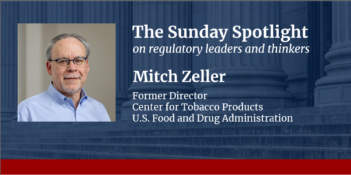
Previously published essay on The Regulatory Review sparks debate over the role that cost-benefit analysis should play in regulatory decision-making.
Last year, the U.S. Supreme Court renewed a decades-long debate over regulators’ use of cost-benefit analysis. In its opinion in Michigan v. EPA, the Court held that the U.S. Environmental Protection Agency (EPA) erred by not considering costs when deciding whether to regulate hazardous air pollutant emissions from power plants. Although the Court’s decision hinged on language specific to the Clean Air Act—that is, the statute’s requirement that EPA can issue only toxic air pollutant rules that are “appropriate and necessary”—the case raises a more wide-ranging, foundational question: What role should cost-benefit analysis play in regulatory decision-making?
Cost-benefit analysis refers to efforts by which agency officials try to estimate both the benefits and the costs expected to result from different regulatory options. Officials then use those estimates to inform their decision-making and select the best option. Some proponents of cost-benefit analysis say that the best option will be the one that promises the greatest net benefits—that is, the regulation’s expected benefits minus its costs. These proponents claim that such use of cost-benefit balancing will better ensure that regulations maximize societal welfare.
Opponents, on the other hand, argue that cost-benefit analysis can mislead decision-makers. They contend that agencies often lack the ability to estimate benefits or costs with any accuracy, and that the kind of research that would have to be conducted to obtain more accurate estimates would needlessly bog down the regulatory process. They also object to putting into dollar terms certain benefits—such as reductions in premature mortality or improvements in health—that they believe either cannot or should not be monetized.
Both sides’ arguments raise critical questions about the role of cost-benefit analysis in the regulatory process. When deciding between alternatives, should regulators always strive to conduct a formal analysis in which the costs and benefits of each alternative are quantified and monetized? Or is a more informal balancing sufficient, whereby costs and benefits are considered qualitatively, or where the regulator does not face a firm requirement to choose the option with the greatest estimated net benefits? Are there certain societal benefits that should never truly be monetized?
In this series, The Regulatory Review presents both sides of the cost-benefit debate. We start with an essay written by Amy Sinden, which responds to an essay by John D. Graham and Paul R. Noe that The Regulatory Review published earlier, in which Graham and Noe advocated greater reliance by agencies on cost-benefit balancing. In their previously published essay, Graham and Noe argued that recent U.S. Supreme Court decisions—from a 2009 decision in Entergy Corporation v. Riverkeeper, to last year’s decision in Michigan v. EPA—have essentially created a presumption in favor of cost-benefit analysis. In her response essay, Sinden points to what she considers serious shortcomings of cost-benefit analysis, and she also challenges the view that Supreme Court decisions require agencies to engage in more rigorous use of cost-benefit analysis. Finally, The Regulatory Review presents an essay by Graham and Noe, in which they reply to Sinden’s contentions.
A Paradigm Shift in the Cost-Benefit State
April 26, 2016 | John D. Graham and Paul R. Noe
Most statutes are silent or ambiguous on cost-benefit balancing, posing a challenge for agencies that, in the face of a longstanding judicial presumption against it, have been directed by the president to implement regulatory standards based on such balancing. But the Supreme Court may have reversed that presumption, presenting an opportunity to advance the cost-benefit state.
Supreme Court Remains Skeptical of the “Cost-Benefit State”
September 26, 2016 | Amy Sinden
Following the U.S. Supreme Court’s opinion in Michigan v. EPA last term, a number of commentators have revived talk of something called the “Cost-Benefit State.” But no matter how much John Graham and Paul Noe might wish it were so, the Cost-Benefit State is—thankfully—not here. The consideration of costs that the Court endorsed in Michigan is not synonymous with formal cost-benefit analysis.
A Reply to Professor Amy Sinden’s Critique of the “Cost-Benefit State”
September 27, 2016 | John D. Graham and Paul R. Noe
Despite the strong, bipartisan support for CBA, Professor Sinden seems to view it as the worst form of analysis. And although there is, unfortunately, no perfect approach for developing regulations, Professor Sinden favors alternatives to CBA that are far less satisfactory. We stand by our view that Congress and the next President should support and strengthen the use of cost-benefit analysis for important regulatory decisions.



